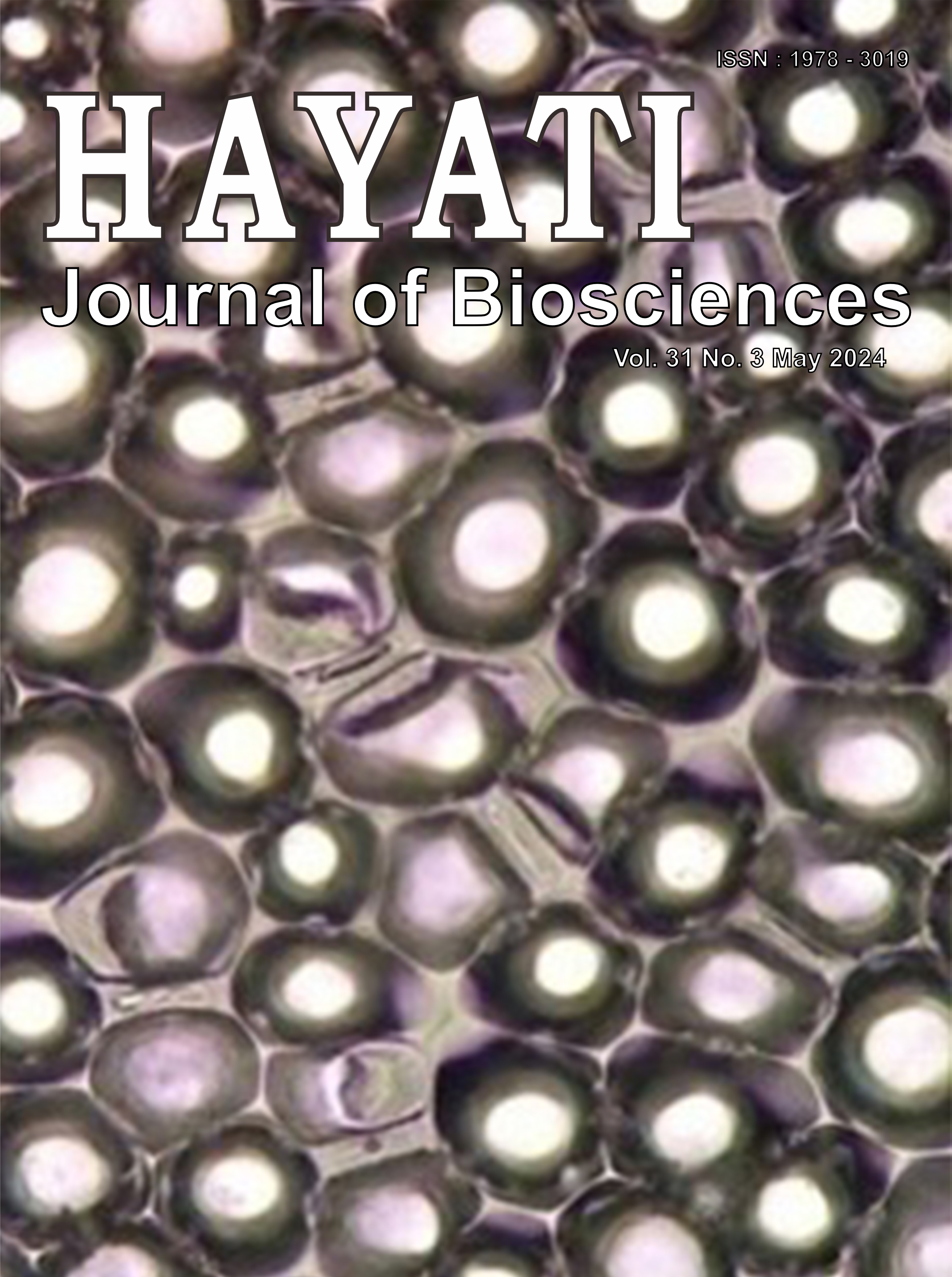Genetic Structure of Gallus varius Based on Middle-Lower Section of Control Region mtDNA
Abstract
Gallus varius, an indigenous bird species of Indonesia, demonstrates significant genetic diversity. The genetic diversity assessment in G. varius encompassed both mitochondrial DNA (mtDNA) and nuclear DNA, with the mtDNA analysis primarily centered on domain I of the control region. This study aimed to describe the genetic diversity and structure of G. varius inhabiting Java, Madura, Lombok and Sumbawa based on the middle-lower part of control region mtDNA. Genomic DNA was extracted from the calamus tip of feather, then the middle-lower part of control region was amplified and sequenced using two pairs of primers. In the examined control region, spanning from 944 to 1,008 bp, 13 bp of nucleotide variation was observed, with nucleotide diversity at 0.0021. Between G. varius samples and the reference (NC_007238.1), a total of 7 haplotypes were identified, 5 unique and 2 shared haplotypes, with haplotype diversity at 0.7692. The substantial diversity of haplotypes in this study and two previous study suggests that the genetic diversity of G. varius has remained stable over the past two decades. Additionally, genetic distance data indicate there is multiple G. varius subspecies, and the haplotype network accentuates signs of population differentiation.
Downloads
Copyright (c) 2024 Alfiyan Achmad, Achmad Farajallah, Maria Ulfah, Dyah Perwitasari-Farajallah, Muladno Muladno

This work is licensed under a Creative Commons Attribution-NonCommercial 4.0 International License.
HAYATI J Biosci is an open access journal and the article's license is CC-BY-NC. This license lets others distribute, remix, tweak, and build upon author's work, as long as they credit the original creation. Authors retain copyright and grant the journal/publisher non exclusive publishing rights with the work simultaneously licensed under a https://creativecommons.org/

























.png) IPB University
IPB University Department of Biology
Department of Biology The Indonesian Biological Society
The Indonesian Biological Society 

